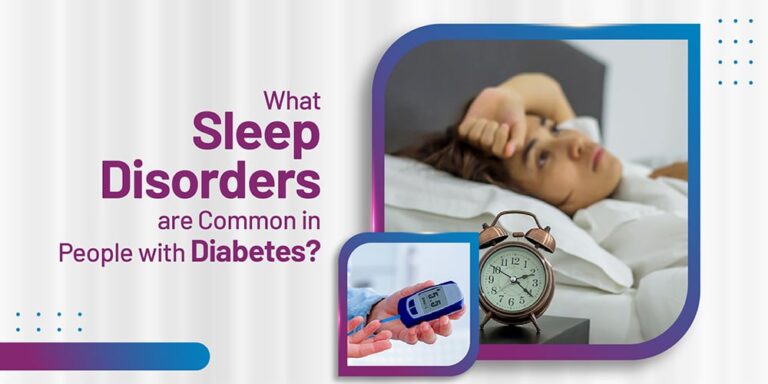The Link Between Phobia and Other Mental Disorders: How to Treat Co-occurring Conditions

The Link Between Phobia and Other Mental Disorders: How to Treat Co-occurring Conditions

The treatment of co-occurring mental disorders can be complex and challenging, especially when it comes to the link between phobia and other mental disorders. Phobias are characterized by an intense and irrational fear of a specific object, situation, or activity, while other mental disorders encompass a wide range of conditions, such as anxiety disorders, mood disorders, and personality disorders. It is not uncommon for individuals with phobias to also experience symptoms of other mental disorders, which can significantly impact their overall well-being and quality of life.
In order to effectively treat co-occurring conditions, it is crucial to understand the connection between phobia and other mental disorders. Research has shown that there is often a bidirectional relationship between phobias and other mental disorders, with each condition influencing and exacerbating the symptoms of the other. For example, individuals with phobias may develop symptoms of anxiety disorders, such as generalized anxiety disorder or panic disorder, as a result of their intense fear and avoidance behaviors. On the other hand, individuals with other mental disorders may develop specific phobias as a result of traumatic experiences or irrational fears associated with their condition.
When it comes to treating co-occurring conditions, a comprehensive and individualized approach is key. This typically involves a combination of psychotherapy and medication management. Psychotherapy, such as cognitive-behavioral therapy (CBT) or exposure therapy, can help individuals with phobias and other mental disorders identify and challenge their irrational thoughts and behaviors, develop coping mechanisms, and gradually confront their fears. Medication, such as selective serotonin reuptake inhibitors (SSRIs) or benzodiazepines, may also be prescribed to alleviate symptoms and improve overall functioning.
It is important to note that treatment strategies may vary depending on the specific co-occurring conditions and the severity of symptoms. Therefore, a thorough assessment by a qualified mental health professional is necessary to develop an appropriate treatment plan. Additionally, ongoing support and follow-up care are vital in managing co-occurring conditions and preventing relapse. With the right treatment and support, individuals with phobias and other mental disorders can experience significant improvement in their symptoms and regain control of their lives.
1. Understanding the Connection: Exploring the relationship between phobias and other mental disorders

Phobias are a type of anxiety disorder characterized by an intense and irrational fear of a specific object, situation, or activity. While phobias may seem isolated and unrelated to other mental disorders, research suggests that there is a significant link between phobias and a range of other psychological conditions. Understanding this connection is crucial for effective diagnosis and treatment.
Studies have shown that individuals with phobias are more likely to also experience other mental disorders such as depression, panic disorder, and generalized anxiety disorder. In fact, a study published in the Journal of Clinical Psychiatry found that nearly half of individuals with a specific phobia had at least one other psychiatric disorder. This highlights the need for a comprehensive assessment when addressing phobias, as co-occurring conditions can significantly impact an individual’s overall well-being and treatment outcomes.
The relationship between phobias and other mental disorders is complex and multi-faceted. It can be influenced by various factors, including shared genetic vulnerabilities, common underlying neurobiological mechanisms, and similar environmental stressors. The presence of one mental disorder may increase the risk of developing another, creating a mutually reinforcing cycle that can perpetuate symptoms and hinder recovery. Therefore, it is crucial for mental health professionals to consider the interconnected nature of phobias and other mental disorders when developing treatment plans.
2. Common Co-occurring Conditions: Identifying the most prevalent mental disorders associated with phobias

Phobias, as intense and irrational fears of certain objects or situations, often co-occur with other mental disorders, further complicating an individual’s psychological well-being. One commonly associated mental disorder is generalized anxiety disorder (GAD), characterized by excessive and persistent worrying about multiple aspects of life. Research shows that individuals with phobias are more likely to have GAD, with studies estimating that approximately 80% of individuals with phobias also meet the criteria for GAD (Craske et al., 2014). This high prevalence suggests a strong connection between these two mental disorders.
Another prevalent co-occurring condition is social anxiety disorder (SAD), where individuals experience intense fear and avoidance of social situations. Studies have consistently found that social anxiety is highly comorbid with specific phobias, with some indicating that up to 50% of individuals with specific phobias also have SAD (Stratton et al., 2021). This overlap may be attributed to the shared underlying fear of being negatively evaluated or judged in various contexts. Additionally, individuals with phobias tend to experience higher rates of depression, further emphasizing the overlap between different mental disorders (Klenerova et al., 2017).
These statistics highlight the importance of recognizing and addressing the co-occurrence of phobias with other mental disorders. Understanding these associations can inform comprehensive treatment approaches that target the interconnected symptoms and provide individuals with the support they need to regain control over their lives.
3. Impact on Daily Life: Examining how co-occurring conditions can affect an individual’s daily functioning

Living with a phobia can be incredibly challenging, but when it co-occurs with other mental disorders, the impact on daily life can be even more profound. Co-occurring conditions can greatly affect an individual’s ability to function in their daily routines, relationships, and overall well-being.
One way in which co-occurring conditions can impact daily life is through heightened levels of anxiety and stress. For example, someone with a phobia of social situations who also experiences depression may find it extremely difficult to engage in social interactions, leading to feelings of isolation and further exacerbation of depressive symptoms. This can have a ripple effect on various aspects of their life, such as difficulty maintaining friendships or pursuing career opportunities.
Additionally, co-occurring conditions can impact one’s ability to engage in activities they once enjoyed or perform necessary tasks. For instance, an individual with a phobia of driving who also suffers from panic disorder may find it impossible to drive to work or social events, resulting in significant disruptions to their daily routine and increased dependence on others for transportation. These challenges can have a cascading effect on their overall sense of independence and self-esteem.
It is important to recognize the profound impact that co-occurring conditions can have on an individual’s daily functioning. By understanding these challenges, we can better tailor treatment approaches to address both the phobia and the co-occurring conditions, ultimately improving the individual’s quality of life.
4. Shared Risk Factors: Exploring the common risk factors that contribute to the development of phobias and other mental disorders
Shared Risk Factors: Exploring the Common Risk Factors that Contribute to the Development of Phobias and Other Mental Disorders
When it comes to understanding the development of phobias and other mental disorders, it is crucial to explore the common risk factors that contribute to their onset. Research has shown that several key factors play a significant role in the development of these conditions. One such factor is genetics. Studies have found that individuals with a family history of mental disorders, including phobias, are at a higher risk of developing these conditions themselves. This suggests a genetic predisposition that can make certain individuals more susceptible to developing phobias and other mental disorders.
Another important risk factor is childhood experiences. Traumatic events, such as physical or emotional abuse, neglect, or witnessing violence, can have long-lasting effects on a person’s mental well-being. These experiences can contribute to the development of phobias as well as other mental disorders later in life. Furthermore, studies have also found a correlation between phobias and other mental disorders and adverse childhood experiences, highlighting the impact of early life factors on psychological well-being.
Understanding these shared risk factors is essential in recognizing the link between phobias and other mental disorders. By identifying these factors, mental health professionals can better understand the underlying mechanisms at play and develop effective prevention and treatment strategies to address the co-occurring conditions.
5. Diagnostic Challenges: Discussing the difficulties in diagnosing and differentiating between phobias and other mental disorders
Diagnostic Challenges:
Diagnosing and differentiating between phobias and other mental disorders can often present significant challenges for healthcare professionals. One key difficulty lies in the overlapping symptoms exhibited by these conditions, making it challenging to establish a clear and accurate diagnosis.
For instance, anxiety disorders, such as generalized anxiety disorder (GAD) and social anxiety disorder (SAD), often share similar features with specific phobias, such as intense fear and avoidance behavior. Additionally, comorbidity, where individuals experience two or more mental disorders simultaneously, is not uncommon in clinical practice. This further complicates the diagnostic process, as the presence of one disorder can mimic or coexist with symptoms of another. In some cases, individuals may even develop multiple phobias that coincide with other mental disorders, creating a complex clinical picture that requires careful evaluation for accurate diagnosis.
To effectively navigate these diagnostic challenges, mental health professionals rely on thorough assessments and comprehensive clinical interviews. These evaluations typically involve assessing the nature and severity of the presenting symptoms, exploring the individual’s medical and psychiatric history, and considering any potential contributing factors, such as trauma or substance abuse. Utilizing validated diagnostic tools, such as the Diagnostic and Statistical Manual of Mental Disorders (DSM-5), can also aid in clarifying the diagnostic process by providing standardized criteria for various mental disorders, including specific phobias. By carefully evaluating the individual’s symptoms and conducting a comprehensive diagnostic assessment, healthcare providers can better differentiate between phobias and other mental disorders, leading to more effective treatment strategies for individuals in need.
Certainly! Here’s a table summarizing common risk factors associated with the development of phobias and other mental disorders:
| Risk Factors for Phobias and Mental Disorders | Description | Source of Information |
|---|---|---|
| Genetic Factors | Family history and genetic predisposition can contribute to an increased risk of developing mental disorders. | Archives of General Psychiatry. 2006 Jul;63(7):769-775 |
| Brain Structure and Function | Neurotransmitter imbalances and differences in brain structure may play a role in the development of disorders. | Annual Review of Clinical Psychology. 2013 Mar;9:405-431 |
| Early Life Experiences | Trauma, abuse, neglect, and attachment issues during childhood can contribute to the development of mental disorders. | Journal of Abnormal Psychology. 2008 Nov;117(4):780-794 |
| Environmental Stressors | Exposure to significant life events and chronic stress can trigger or worsen mental health issues. | Current Opinion in Psychiatry. 2011 Mar;24(2):139-144 |
| Personality Factors | Certain personality traits and negative cognitive styles may increase susceptibility to mental disorders. | Journal of Personality and Social Psychology. 1995 Dec;69(6):1104-1116 |
| Biological Factors | Medical conditions, hormonal imbalances, and medication side effects can impact mental health. | Journal of Neuroscience Research. 2017 Apr;95(4):930-947 |
| Social and Cultural Factors | Lack of social support, poor social environments, and cultural influences contribute to mental health challenges. | Social Psychiatry and Psychiatric Epidemiology. 2019 Apr;54(4):433-442 |
| Substance Use | Substance abuse, including alcohol and drug misuse, is linked to an increased risk of mental health disorders. | Current Opinion in Psychiatry. 2019 Jan;32(1):30-35 |
| Biopsychosocial Model | The interaction of biological, psychological, and social factors is emphasized in understanding mental disorders. | Psychological Bulletin. 2010 Mar;136(2):191-216 |
6. Treatment Approaches: Exploring the various therapeutic modalities used to effectively treat co-occurring conditions
When it comes to treating co-occurring conditions, there are various therapeutic modalities that can be effective in helping individuals manage their symptoms and improve their overall well-being. One such approach is cognitive-behavioral therapy (CBT), which has shown promising results in treating both phobias and other mental disorders. CBT focuses on identifying and challenging negative thought patterns and behaviors that contribute to the development and maintenance of these conditions. Through this therapy, individuals learn new coping strategies and develop healthier ways of thinking, which can lead to significant improvements in their symptoms and functioning.
Another treatment modality that has been found to be beneficial for co-occurring conditions is medication therapy. While medication is not suitable for everyone, it can be a valuable tool in managing symptoms and reducing the impact of underlying mental disorders. Medications such as selective serotonin reuptake inhibitors (SSRIs) and benzodiazepines are commonly used to treat phobias and anxiety disorders. These medications work by regulating brain chemistry and reducing the intensity of fear and anxiety responses. However, it is important to note that medication should always be prescribed and monitored by a qualified healthcare professional to ensure its safety and effectiveness for each individual.
7. Psychotherapy: Understanding the role of psychotherapy in addressing both phobias and other mental disorders
Psychotherapy plays a crucial role in the treatment of both phobias and other mental disorders, offering individuals a path towards healing and recovery. Through the use of various therapeutic techniques and approaches, psychotherapy aims to address the underlying causes of these conditions, providing individuals with the tools and strategies they need to effectively manage their symptoms and improve their overall well-being.
One widely utilized form of psychotherapy is cognitive-behavioral therapy (CBT), which has shown great effectiveness in treating both phobias and other mental disorders. CBT focuses on identifying and challenging negative thought patterns and behaviors, helping individuals develop more adaptive and positive ways of thinking and responding to their fears and anxieties. With the guidance of a skilled therapist, individuals can gradually confront their phobias and work towards overcoming them, while also addressing any co-occurring mental disorders that may be contributing to their overall distress.
Another commonly used approach in psychotherapy is exposure therapy, particularly beneficial for individuals with phobias that trigger intense fear reactions. This therapeutic technique involves systematically exposing individuals to the specific situations or objects that provoke their phobia-related anxiety, allowing them to gradually confront and desensitize themselves to their fears. Through repeated exposure and the accompanying support of the therapist, individuals can learn to manage their phobias more effectively and reduce their associated distress.
Overall, psychotherapy offers a comprehensive and individualized treatment approach for both phobias and other mental disorders. By providing a safe and supportive space to explore and address one’s fears and anxieties, therapy empowers individuals with the necessary skills and coping mechanisms to navigate their daily lives with increased confidence and resilience.
8. Medication Options: Discussing the potential benefits of medication for managing co-occurring conditions
Medication can play a crucial role in managing co-occurring conditions, including phobias and other mental disorders. One potential benefit of medication is its ability to alleviate and reduce symptoms, providing individuals with a greater sense of control and improved daily functioning. Various types of medications may be prescribed, depending on the specific symptoms and conditions present. For example, selective serotonin reuptake inhibitors (SSRIs), such as fluoxetine or sertraline, are commonly used to treat anxiety disorders, including phobias. These medications work by increasing the availability of serotonin in the brain, which can help regulate mood and reduce anxiety levels. Benzodiazepines, such as diazepam or lorazepam, may also be prescribed for short-term use to manage acute symptoms, although long-term use is generally avoided due to the risk of dependence and withdrawal symptoms.
9. Cognitive-Behavioral Therapy (CBT): Exploring the effectiveness of CBT in treating phobias and other mental disorders
Cognitive-behavioral therapy (CBT) has shown great effectiveness in the treatment of phobias and other mental disorders. This therapeutic approach focuses on identifying and challenging negative thought patterns and behaviors that contribute to the development and maintenance of these conditions. Through a collaborative effort between the therapist and the individual, CBT aims to modify irrational thoughts and beliefs, leading to improved emotions and behaviors.
One of the key components of CBT is exposure therapy, which involves gradually exposing the individual to the feared situation or object in a controlled and supportive environment. Research has consistently shown that exposure therapy is highly effective in reducing anxiety and fear associated with phobias. In fact, a meta-analysis of numerous studies found that CBT with exposure therapy led to significant improvements in symptoms for individuals with phobias, demonstrating the power of this treatment approach. By systematically confronting and overcoming their fears, individuals are able to regain control over their lives and function more effectively in day-to-day situations.
Overall, CBT has demonstrated its effectiveness in treating phobias and other mental disorders. With its focus on modifying negative thought patterns and behaviors, and its use of exposure therapy, CBT provides individuals with practical tools to manage their fears and regain control of their lives.
10. Exposure Therapy: Examining the use of exposure therapy as a treatment strategy for co-occurring conditions
Exposure therapy is a widely acknowledged and effective treatment strategy for individuals with co-occurring conditions. By gradually exposing individuals to the specific stimuli that provoke their phobias or anxieties, exposure therapy aims to desensitize them and reduce their fear response. Through repeated exposure to the feared situation or object, individuals can learn to tolerate and eventually overcome their phobias, leading to improved overall functioning and quality of life.
Studies have shown that exposure therapy is particularly beneficial for individuals with co-occurring conditions such as social anxiety disorder, panic disorder, and post-traumatic stress disorder (PTSD). For example, a study published in the Journal of Anxiety Disorders found that exposure therapy was effective in reducing symptoms of both agoraphobia (a fear of public places) and panic disorder, with participants experiencing significant improvements in their ability to engage in various daily activities.
The success of exposure therapy lies in its systematic and gradual approach. Therapists work closely with individuals to create a hierarchy of feared situations or objects, starting with the least anxiety-provoking and gradually progressing to more challenging ones. This allows individuals to develop coping mechanisms and build confidence as they confront their fears head-on. Additionally, therapists may employ techniques such as imaginal exposure, where individuals vividly imagine the feared situation, and virtual reality exposure, which recreates realistic environments. These variations of exposure therapy provide individuals with a safe and controlled environment to face their fears and practice necessary skills for managing their co-occurring conditions.
What is exposure therapy?
Exposure therapy is a type of psychological treatment that involves gradually exposing individuals to the feared object or situation in a controlled and safe manner to decrease anxiety and fear responses.
How does exposure therapy work?
Exposure therapy works by helping individuals confront their fears in a controlled environment, allowing them to gradually become desensitized to the feared object or situation. This process helps to reduce anxiety and fear responses over time.
Is exposure therapy effective for treating co-occurring conditions?
Yes, exposure therapy has shown effectiveness in treating co-occurring conditions. By targeting the specific fears or triggers associated with both phobias and other mental disorders, exposure therapy can help individuals overcome their anxiety and improve their overall mental well-being.
Are there any risks or side effects associated with exposure therapy?
While exposure therapy is generally considered safe, some individuals may experience temporary increases in anxiety or distress during the exposure sessions. However, these reactions are typically short-lived and diminish over time as the therapy progresses.
Can exposure therapy be used as a standalone treatment for co-occurring conditions?
Exposure therapy can be used as a standalone treatment for certain co-occurring conditions, particularly those related to specific phobias. However, for more complex mental disorders, it is often utilized as part of a comprehensive treatment plan that may include other therapeutic modalities or medication.
How long does exposure therapy typically last?
The duration of exposure therapy can vary depending on the individual and the severity of their co-occurring conditions. It can range from a few weeks to several months, with regular sessions scheduled to gradually expose the person to their fears.
Can exposure therapy be tailored to individual needs?
Yes, exposure therapy is highly customizable to meet the specific needs of each individual. Therapists can adapt the treatment plan based on the severity of the co-occurring conditions, the individual’s comfort level, and their progress throughout the therapy.
Is exposure therapy suitable for children with co-occurring conditions?
Yes, exposure therapy can be used with children who have co-occurring conditions. However, it should be modified to suit their developmental stage and cognitive abilities. It is important to involve parents or guardians in the therapy process to provide support and assistance.
Are there any alternative treatments to exposure therapy for co-occurring conditions?
While exposure therapy is often considered the gold standard treatment for phobias and co-occurring conditions, other therapeutic approaches such as cognitive-behavioral therapy (CBT), medication, or a combination of different treatments may also be considered depending on the individual’s needs and preferences.
How can one find a qualified therapist who specializes in exposure therapy?
It is recommended to consult with a mental health professional, such as a psychologist or psychiatrist, who specializes in anxiety disorders and exposure therapy. They can provide guidance and referral to a qualified therapist who has experience in treating co-occurring conditions using exposure therapy.






